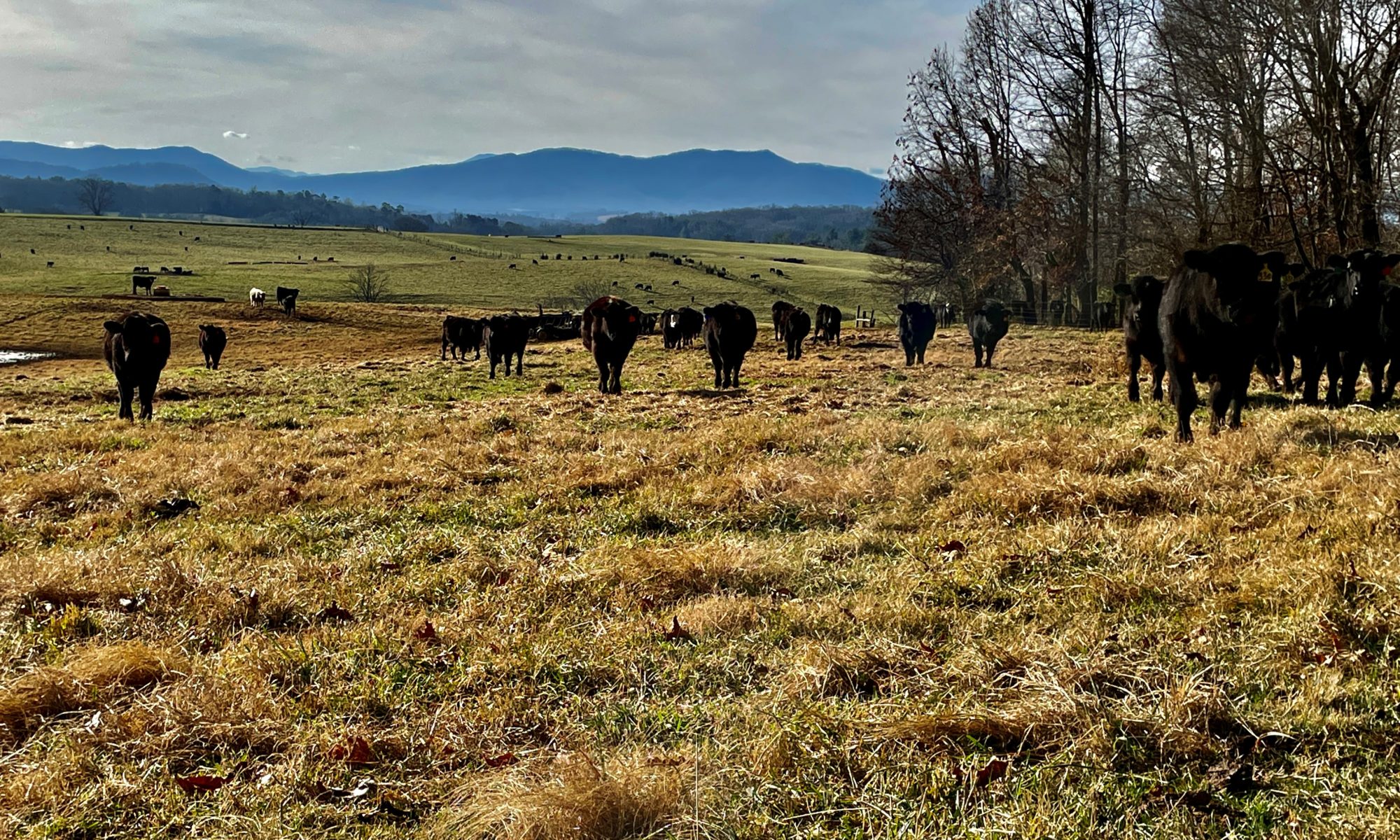

Dr. Katie Mason
Assistant Professor and Extension Beef Cattle Nutrition Specialist
Department of Animal Science
P: 865-974-8941
Much of the discussion surrounding beef production systems today includes terms like sustainability, regenerative agriculture, greenhouse gases, and carbon footprint, just to name a few. And with that comes the topic of methane produced by cattle. Much of the conversation focuses on the “how.” How do we lower emissions? How do we sequester carbon? How do we rebuild the soil? But many people forget to ask “why?” Why do cattle make methane in the first place? Why is it different for cattle compared with other animals? Let’s take a deeper look.
Cattle are ruminant animals, meaning they have a four-chambered stomach made up of the rumen, reticulum, omasum, and abomasum. They consume cellulosic, or fibrous plant material, which humans or monogastric animals cannot digest. So, what actually happens to those plants in the rumen to result in the infamous cow burps that everyone is talking about?
Cattle eat forages (grass and other pasture plants) and forage moves into the rumen. In the rumen, microbes ferment the fibrous material. During this process, microbes create volatile fatty acids. The volatile fatty acids are absorbed through the rumen to meet the metabolic needs of cattle. In reality, forages feed rumen microbes and rumen microbe byproducts feed the cow. Other byproducts of the fermentation process in the rumen are dihydrogen and carbon dioxide. A specific type of microbes in the rumen are called methanogens. These microorganisms take the carbon dioxide and dihydrogen (I’ll spare you the biochemistry lesson) and create methane, also known as CH4. This gas is eructated, or burped, out as a waste product. If dihydrogen is not removed from the rumen, the fermentation process is inhibited, meaning cattle can no longer digest forages appropriately.
Often, people ask, can you just make a cow not produce methane? But as has just been discussed, rumen fermentation of fibrous feeds in the true essence of the cow. It is the reason that cows can eat forages and we can’t, and in turn, produce a nutrient dense protein product. If you make cows no longer produce a methane, they would no longer be a ruminant, and would no longer be able to turn the millions of acres of grazing lands into nutrient dense beef, not to mention countless byproducts like leather, medications, cosmetics, and more. Those grazing lands are typically not suitable for crop production. Cattle on grazing lands recycle nutrients and make use of an abundant feedstuff that would otherwise go to waste.
There is always work to be done in production agriculture, and some of that work is reducing emissions and becoming more efficient. We should certainly strive to be sustainable in our management practices, but at the end of the day, a cow is a cow. In the words of Dr. Alison Van Eenennaam, “nature has already developed a fully functional biological fermentation bioreactor for the conversion of inedible solar-powered cellulosic material, such as grass, into high-quality protein. It is called a cow.”
So, when the conversation turns to cows and methane, remember that cows have the superpower of turning plant material into beef, with the trade-off that methane is produced. And we have to take complex, all-encompassing look at the lifecycle of ruminants to understand the important role that they play in the global ecosystem and food security.